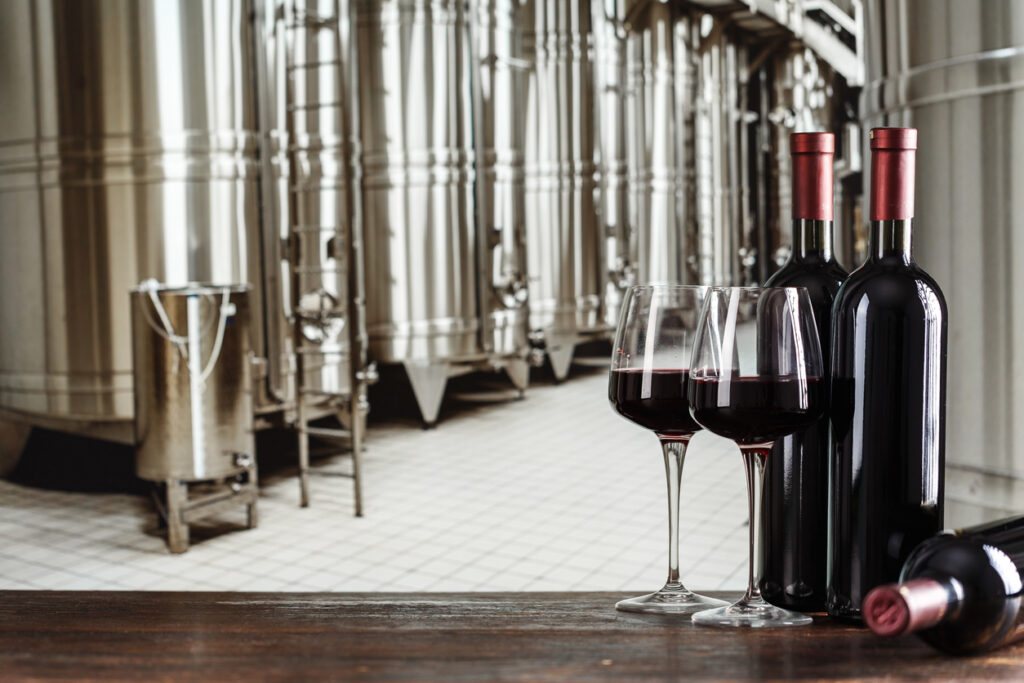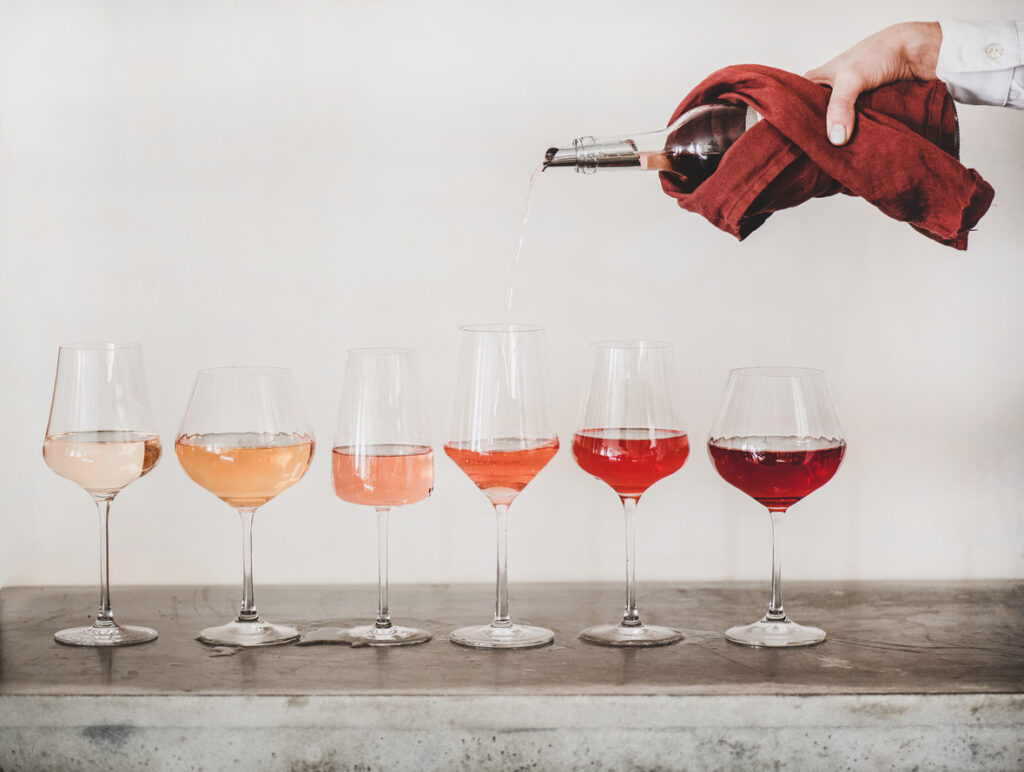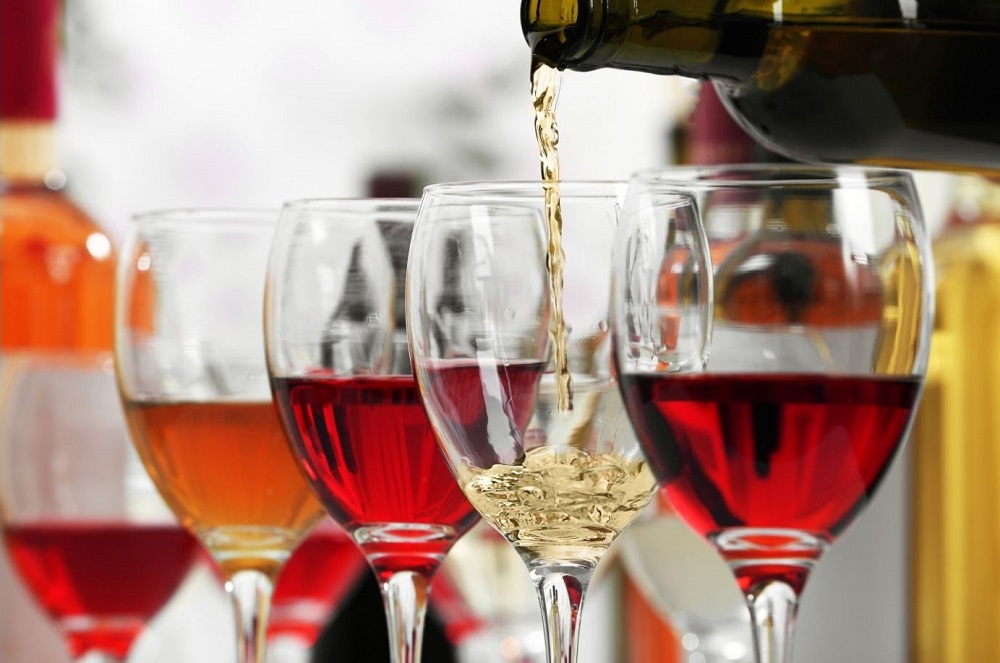Over the years, wine has become an integral part of our social gatherings and culinary experiences. Its diverse range of flavors and aromas have captivated the palates of connoisseurs and casual drinkers alike.
Among the vast array of wines available, one can find an intriguing dichotomy between two popular choices: rose wine and red wine. While both share a common origin from grapes, these wines differ significantly in their production process, color, taste profile, and even societal perceptions. In this article, we will uncover the unique characteristics that set rose wine apart from its more well-known counterpart – red wine – allowing you to fully appreciate the nuances each brings to your glass.

Differences between Rose wine vs Red wine
Rose wine and red wine may both be derived from grapes, but they possess distinct characteristics that set them apart. While red wine receives its deep hue from being fermented with the grape skins, rosé is made by macerating the grape skins for a much shorter period. This brief contact gives rosé its light pink color and results in a more delicate flavor profile compared to its bolder counterpart, red wine.

Taste
In terms of taste, red wines are typically richer and more robust due to their longer skin contact during fermentation. They often exhibit complex flavors of dark fruits like blackberries and cherries, along with hints of spice and earthiness. On the other hand, rosé wines tend to be lighter-bodied with subtle fruit notes such as strawberries or raspberries. Additionally, rosés can offer refreshing acidity and crispness reminiscent of summer fruits like watermelon or citrus.
Food Pairings
When it comes to food pairings, red wine tends to complement heartier dishes such as grilled meats or aged cheeses. Its fuller body provides balance against strong flavors while enhancing the overall dining experience. Rosé wines, on the other hand, shine alongside lighter fare such as seafood dishes or salads. Their vibrant acidity serves as a palate cleanser which complements fresh ingredients without overpowering them.

In conclusion, the main differences between rose wine vs red wine lie in factors like skin contact during fermentation, flavor profiles ranging from bold richness to delicate freshness, and ideal food pairings according to their respective characteristics.
Similarities between Rose wine vs Red wine
When it comes to wine, there are often heated debates about the merits of different types and variations. One such debate is between rose wine and red wine. While they may seem worlds apart in terms of flavor and appearance, there are actually some surprising similarities to be found.

Firstly, both rose and red wines get their color from the skin of the grapes they are made from. The main difference lies in the amount of time these skins stay in contact with the juice during fermentation. Red wine gets its deep hue from an extended period of maceration, while rose wines have a shorter contact time, resulting in a lighter color.

Furthermore, both types of wine can exhibit a wide range of flavors depending on factors such as grape variety, region, and winemaking techniques. Both can showcase fruity aromas like strawberry or raspberry notes, as well as more complex profiles with hints of spice or earthiness. The key lies in finding high-quality bottles that beautifully express these characteristics.

In conclusion, although they may appear distinct at first glance, rose wine and red wine share more similarities than differences. They both owe their colors to grape skins and can offer an array of flavors depending on various influences during production.
How to serve Rose Wine vs Red Wine
When it comes to serving rose wine versus red wine, there are a few key differences that can enhance your tasting experience. Firstly, temperature is crucial. While red wines are typically served at room temperature, around 60-68 degrees Fahrenheit, rose wines benefit from being chilled slightly lower at around 50-55 degrees Fahrenheit. This lower temperature helps bring out the crispness and refreshing qualities of the wine.

Secondly, when serving red wine, it’s common to decant it or allow it to breathe for some time before serving. This allows the wine to open up and soften its flavors. However, this technique doesn’t apply to rose wines as they are meant to be enjoyed immediately after opening the bottle. Rose wines tend to have more delicate aromas and flavors compared to their robust red counterparts.

By understanding these differences in temperature preference, decanting needs (or lack thereof), and food pairings between rose and red wines, you’ll be able to fully appreciate each style’s unique characteristics.
Flavor of Rose wine vs Red Wine
The flavor profiles of rose wine and red wine are as distinct as night and day. While both are made from grapes, the processes used to produce these wines create unique flavors that can transport your taste buds to completely different realms. Red wine, with its bolder and complex flavor profile, often boasts notes of dark fruits like blackberry or cherry, along with hints of spices like clove or pepper. It tends to have a deeper tannin structure that gives it a rich and velvety texture on the palate.

On the other hand, rose wine offers a more delicate and refreshing taste experience. Unlike red wine which gains most of its color and flavor from skin contact during fermentation, rose wines obtain their light pink hue by allowing the grape skins to remain in contact with the juice for a shorter period of time. This results in an array of flavors ranging from bright red berries like strawberry or raspberry to subtle herbal notes such as rose petal or lavender. The acidity in rosé wines is also higher compared to reds, giving them a lively zest that makes them incredibly versatile for pairing with various foods.

In conclusion, while both rose wine and red wine originate from grapes, they offer vastly different tasting experiences. Red wine is bold and robust with deep fruit flavors and complex spice notes. In contrast, rose wines provide a more delicate and refreshing taste profile with bright berry flavors and floral undertones enhanced by higher acidity levels.
Alcohol content of Rose Wine vs Red Wine
The alcohol content of a wine plays an important role in determining its flavor profile and overall drinking experience. When it comes to comparing the alcohol content of rose wine versus red wine, there are some interesting differences to consider.

Typically, rose wines tend to have a lower alcohol by volume (ABV) of 11-13 % compared to their red counterparts. This is because rose wines are made using shorter fermentation periods, where the grape skins are left in contact with the juice for a shorter period of time. As a result, less sugar is converted into alcohol during fermentation, resulting in lower ABV levels.

On the other hand, red wines generally have higher ABV levels of 12-15% due to their longer fermentation process and extended skin contact. This allows for more sugar conversion into alcohol, resulting in a fuller-bodied and higher-alcohol wine. The varietals used in red wines also tend to be naturally rich in sugars and tannins, contributing to the higher ABV levels observed.

While this distinction may seem simplistic at first glance, it ultimately affects not only the strength of the wine but also its taste and body. A lower ABV level in rose wines often results in a lighter and more refreshing drinking experience – perfect for warm summer days or as an apéritif option. Red wines with higher ABVs possess bolder flavors and provide more warmth on the palate when consumed – making them ideal choices for pairing with hearty meals or enjoyed during cooler months.
Calories of Rose Wine vs red wine
Rose wine has gained immense popularity in recent years, with its delicate hue and refreshing taste. But, the burning question that often arises is whether it contains fewer calories than the traditional red wine. The truth is, while both wines originate from grapes, their caloric content can vary depending on factors such as alcohol content and residual sugar.

In general, rose wines tend to have a lower alcohol content compared to red wines. This means that they typically have fewer calories per serving size. However, it’s important to note that not all rose wines are created equal. Some producers may opt for higher alcohol levels or add some residual sugar to boost flavor and sweetness, which in turn increases the calorie count.

On the other hand, red wines are known for their richer flavors and fuller bodies. Due to their longer fermentation process and extended skin contact during maceration, red wines have a higher potential alcohol content and can contain more calories per glass compared to rose wines. Additionally, some red wine varieties like Zinfandel or Cabernet Sauvignon can be more calorically dense due to their natural sugars and tannins present in the grapes.

In conclusion, when comparing the calorie content of rose wine versus red wine, it’s essential to consider individual brands and production methods rather than making sweeping assumptions based solely on color. Moderation is key in enjoying any alcoholic beverage without going overboard on your calorie intake.
Conclusion
In conclusion, both rose wine and red wine have their own unique characteristics and appeal to different palates. Rose wine offers a refreshing and light option for those who prefer a fruity and floral taste, while red wine provides a richer and more complex flavor profile. The choice between the two ultimately depends on personal preference and the occasion. Whether you’re enjoying a summer picnic or a cozy winter evening by the fireplace, there is a wine to suit every mood. So why not explore both rose and red wines to discover your own favorite? Cheers to the wonderful world of wine!

